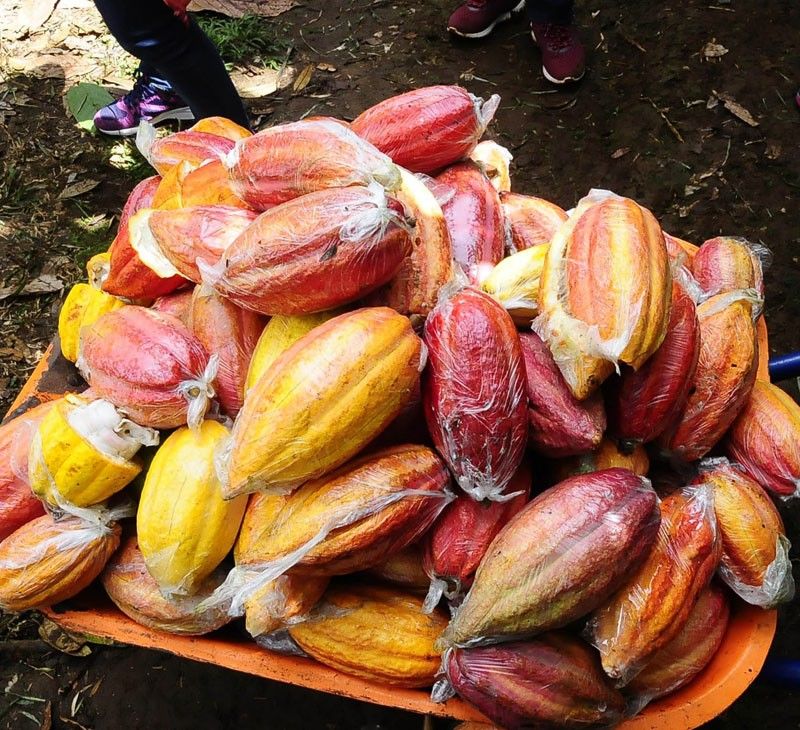Farmer grows recommended cacao varieties through CPAR

MANILA, Philippines — Fermin Anog, 61, has been a farmer all his life.
Prior to the introduction of a community-based participatory action research (CPAR) project in Calinan District, Davao, Mang Fermin was already planting native cacao.
CPAR is one of the banner programs of the Bureau of Agricultural Research and is being implemented nationwide through the various regional field offices of the Department of Agriculture.
Started in 2016, the CPAR on cacao production, is intended to increase the production of cacao in Calinan district, particularly in two baranggays (Sirib and Subasta), by introducing various research interventions including the integration of cacao recommended varieties as well as capacitating the farmers on cacao production management.
“I become a CPAR farmer-cooperator with the help of Fe Oguio, the agricultural technician here in Calinan district. She invited us to a meeting wherein CPAR was introduced to us. We saw the goodness and advantage of having been involved in CPAR so we decided to be involved, said Mang Fermin.
According to Grace Gutierrez, CPAR coordinator of DA-RFO 11, they chose cacao because it is one of the major crops being grown in the Calinan District.
“One problem that we observed during the site validation was that their old cacao trees (more than 20 years old), have been producing less and yet the farmers wanted to sustain them as they were good varieties and high yielding too. But the problem is what technology to apply to return it to a high-yielding tree and to preserve it as well,” she said.
Gutierrez said that due to the limited knowledge in the current technology, problems such as unmanageable pest and disease occurrences, and soil exhaustion also resulted in low yield.
She attributed this to the farmers’ lack of interest in participating in seminars and trainings, inefficient information dissemination, and lack of adoption in technical recommendations.
With the introduction of CPAR in Calinan District, 30 farmers became farmer-cooperators. One of them was Mang Fermin, who became the chair of the Sirib Active Group of Individual Growers Cooperative (SAGING Coop). He owns 600 a square meter property, which was allotted for cacao CPAR.
Part of the interventions in CPAR is the rehabilitation of the old cacao using side grafting orand chupon.
Side grafting technology is done by inserting a pencil-size cacao budwood stick to a triangle cut in a trunk of an old cacao tree, and covering the grafted cacao with cellophane to avoid rain water. After weeks, the cellophane is opened. The old cacao tree is opened when it reached its full blown production.
A clonal rehab of cacao is done after a year.
Meanwhile, chupon technology is done when a pencil-size rootstock from the old cacao tree is grafted with new variety. Binding it with cellophane then opening it after three weeks opening, the branches are pruned so that the newly-grafted would have enough sunshine. When the grafted cacao reached its full blown bearing time, the old tree was then cut off.
As a farmer-cooperator, Mang Fermin received technical assistance as well as initial inputs like new varieties of cacao plants (UF-18), fertilizers (organic and inorganic), farm tools, and equipment in support to their farm activities like pruning shear, bolo, water container, among others.
- Latest
























